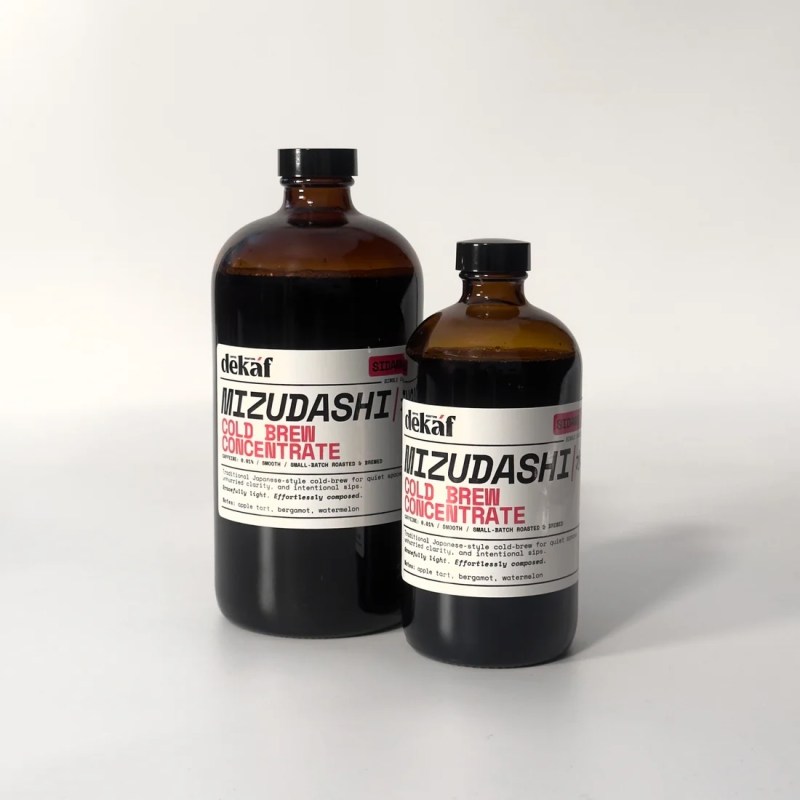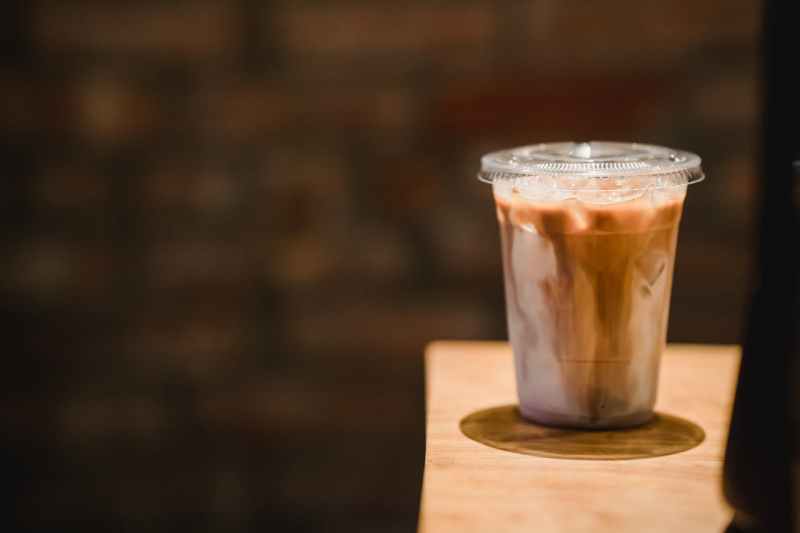Known for its slow, gentle extraction, Japanese cold brew is a form of coffee brewing that every cold brew coffee needs to know about. Though the process requires patience and time, the slow-drip process ensures a bold, strong cup of cold brew coffee that hits the spot. I recently tried Japanese cold brew concentrate, and I could truly taste the difference. But what exactly is Japanese cold brew and how does it differ from other methods of making cold brew? Here’s what you need to know about Japanese cold brew, also known as Mizudashi.
What is Japanese cold brew?

Japanese cold brew (also known as mizudashi) uses a gentle, precise process of making cold brew coffee. Through a slow-dripping process, where cold water drips through the grounds, every drip of water extracts flavor at its own pace. This process creates a “Clairty and depth you can’t achieve with other cold brew methods, rewarding patience and attention detail,” says Anil Mezini, Co-Founder of Dekáf Coffee Roasters. Mezini was first introduced to Japanese cold brew in Kyoto, Japan, and has been brewing it for over 15 years.
“Because Japanese-style cold brew is so gentle, it doesn’t hide anything. That’s why I always start with freshly roasted, specialty-grade beans. The method brings out the best, but it can’t hide the worst.”
Japanese cold brew vs. Japanese iced coffee
As you dive into the world of learning about Japanese cold brew, it’s pretty easy to get overwhelmed by all the different terms. It’s important to make the distinction that slow-drip Japanese cold brew refers to a Kyoto-method that uses the slow drip method. Japanese iced coffee (also called flash brew) is an entirely different drink and requires a different brewing process, where a hot pour-over brewed coffee is immediately flash chilled by pouring it over ice.
Making Japanese cold brew

Per Mezini, there are two main ways to make cold brew coffee. The first method is the most widely used in the U.S., which involves steeping cold grounds in cold or room-temperature water for about 8 to 24 hours. The final result is a light, sweet, and smooth cup of cold brew coffee. This method is popular because it’s easy to make, however, Mezini says the process can sometimes yield muted flavors.
Alternatively, a slow-drip method allows cold water to drip slowly through fine coffee grounds. The process takes longer, requiring more attention and effort, yet it produces a fuller-bodied, sweeter coffee with stronger flavors. This method for making Japanese cold brew is not used as frequently, as it requires close supervision to ensure the drip rate remains constant.
How to brew slow-drip Japanese cold brew at home
To make slow-drip cold brew coffee at home, you’ll need a special type of cold brew coffee maker like the Hario WDCR-6 dripper. This apparatus looks quite different than other cold brew makers you might have seen or used in the past. Follow these steps to try this method of making cold brew at home:
- Start by grinding your coffee beans into a fine or espresso-style grind.
- Moisten coffee grounds with a small bit of water to ensure no dry spots remain. Place them in the lower bowl of your brewer.
- Fill the top bowl with cold water (adding ice is optional if you like it extra cold)
- Open the tap so water drips slowly at a rate of about 1 to 1.5 drips per second.
- Let the coffee extract sit for 6 to 12 hours, depending on your taste preference and the recipe.
Why the process matters
When making slow-drip Japanese cold brew, Mezini says that fully saturating the coffee grounds is a crucial component. To ensure full saturation, he recommends putting on a glove and kneading the coffee grounds (almost like kneading dough) to eliminate dry pockets. Uneven saturation of coffee grounds will lead to uneven extraction, affecting both the flavor and strength of your Japanese cold brew.
While you can use any roast of coffee for Japanese cold brew, Mezini recommends giving light to medium coffees a try to “Enjoy the nuances this type of brew method can bring out. It’s good to keep in mind that if you are using a really light roast, you may want to use more coffee than the typical recipe, as the extraction from a light roasted coffee will be lower.”
Tips and tricks for making Japanese cold brew

Based on Mezini’s experience, he shares his best tips and tricks for mastering the art of making Japanese cold brew. Firstly, he recommends always starting with good-quality coffee beans. “Japanese-style brewing is gentle so it won’t mask flaws,” says Mezini.
He also noted the importance of grind size and ratio. “Go fine, for a grind size similar to espresso. Too coarse, and you’ll under-extract, losing the clarity Mizudashi is known for. As for the ratio of coffee to water, a good starting point is 1:10 (coffee to water by weight), but you can go stronger for a concentrate.”
Lastly, Mezini says making Japanese cold brew is “All about time. It shouldn’t be rushed, and if it’s being experimented with at home, I recommend brewing over 6 to 12 hours.” Using filtered water is also important when making any type of coffee, especially since water makes up 98% of your coffee.




